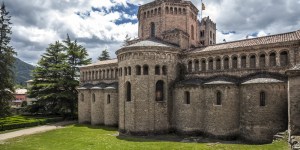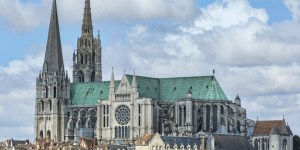For obvious reasons, light holds a particular place in Christian theology – as is clear from the Nicene Creed, which presents Jesus as being “God from God, Light from Light.” But it also plays a capital part in Christian art, especially in architecture. More precisely, in Late Antique and medieval churches.
Scriptures often identify God with light. In the ancient world, as in Late Antiquity and during the Middle Ages, light has been used to represent the divine, and even to highlight its presence. Medieval churches followed the same logic. As Alice Isabella Sullivan and Vladimir Ivanovici explain in their article for Medievalists.net, “the holiness of spaces, persons, or objects was stressed by having light interact with them in awe-inspiring ways. Thus, the study of natural light brings us to the core of how Christianity staged interactions with the divine.”
The most evident differences between uses of natural light in medieval churches can be seen when comparing Romanesque and Gothic architecture. Whereas Romanesque architects and builders decided to keep their churches dimly lit to create a sober environment that invites contemplation, silence, and prayer, Gothic architects invited light into their buildings as a metaphor for God’s presence. As the light enters the sacred space through a stained-glass window, the light itself suggests a supernatural presence.
The aforementioned scholars have recently edited and published a volume called Natural Light in Medieval Churches. The book is divided into two parts: “Light, Theology, and Aesthetics” and “Lighting Sacred Space.” In them, “contexts ranging from the sixth to the 17th century, and spaces from Serbia to Spain and from Estonia to the United States” are discussed in separate chapters and articles by scholars from around the globe.



